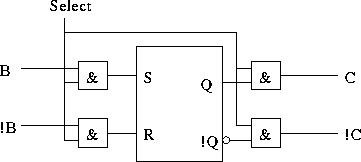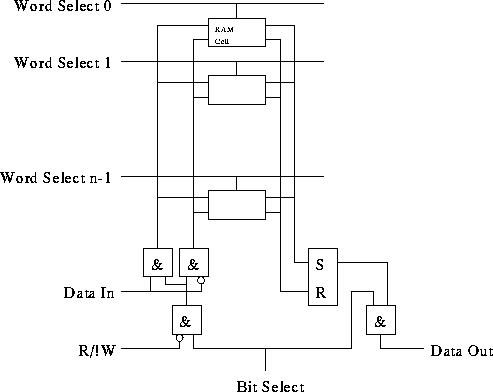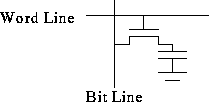
Goal: cell should be as small as possible, to increase storage density.
Think about the AND gates on the output side as tri-state buffers --- transmission gates.

 bit-slice RAM cells. Adding 2-to-4
decoders, how would a
bit-slice RAM cells. Adding 2-to-4
decoders, how would a  RAM look? A
RAM look? A  RAM?
RAM?
Tom Kelliher, CS 220
Nov. 25, 2003
Review of exam and discussion of counter project.
Review for final.
The number of columns may not have anything to do with bits/word --- many RAMs have 1 bit/word but are 2-D internally.

Goal: cell should be as small as possible, to increase storage density.
Think about the AND gates on the output side as tri-state buffers --- transmission gates.

 bit-slice RAM cells. Adding 2-to-4
decoders, how would a
bit-slice RAM cells. Adding 2-to-4
decoders, how would a  RAM look? A
RAM look? A  RAM?
RAM?
